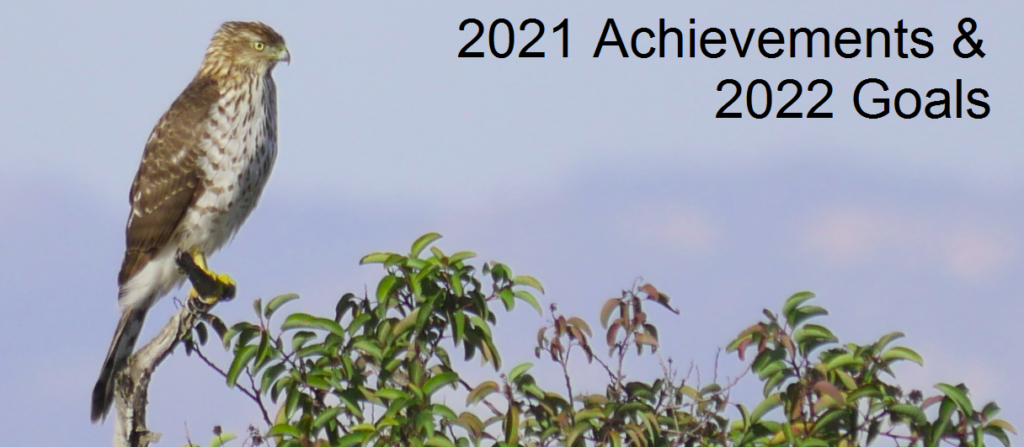
Thank you for your interest in our work in 2021 and our vision for 2022! We could not have achieved what we did in 2021 without your past support, and we won’t be able to achieve our goals for 2022 without your continued support! Please consider making a PayPal donation by going to ballona.org/donate and clicking on the yellow Donate button, or by mailing a check to P.O. Box 5623 Playa Del Rey, CA 90296. Stay up to date by joining our email list here.
Wildlife habitat
Everything we do is ultimately aimed at ensuring the best management policies for the many species of native wildlife that depend on the Ballona Wetlands Ecological Reserve for survival. That includes not just resident species, but species that use the reserve as a corridor or migratory stopping point. In 2021, we launched three major initiatives to protect or enhance native wildlife habitat. Although we only litigate as a last resort, it is frequently necessary to compel adherence to various environmental protection laws.
The first such initiative involved litigation to preserve a group of trees which we knew were being used as a daytime roost for at least one Barn Owl as well as other native wildlife species. After trying for months to work cooperatively with another group that was seeking to remove several mature trees from the ecological reserve, and getting no response, we successfully obtained a preliminary injunction in Los Angeles Superior Court, and subsequently settled the case with the requirement that the organization seeking to cut down the trees in question to obtain a valid Coastal Development Permit, as required by the Coastal Act. Although the trees in question are non-native palm and pine trees, it has long been the policy of every resource agency in this state that the removal of any mature tree requires a careful analysis of the potential impacts to the ecosystem. Just as non-native Eucalyptus Trees have become a critical resource for threatened Monarch Butterflies, other non-native trees can sometimes provide benefits to native species of wildlife. We feel our position has been vindicated now that the Coastal Commission has twice informed the organization seeking to remove the trees at issue that they have not submitted sufficient information to obtain a permit. In 2022, it is possible that we will require more resources to ensure that this organization fully complies with the Coastal Act. The photo below shows two native birds, an American Kestrel (our smallest falcon) and a Northern Flicker (a species of woodpecker) on a tall Mexican Fan Palm, one of the trees that is only still standing because of our intervention.

The second initiative was a lawsuit challenging a proposed engineering project pursuant to the California Environmental Quality Act (CEQA). The purported purpose of the project is to restore the Ballona Wetlands, but the environmental impact analysis for the project shows that it would result in the immediate elimination of existing coastal marsh habitat used by endangered and sensitive species of wildlife, and would result in the near total loss of marsh habitat in the coming decades due to inundation by sea level rise. We are confident that our lawsuit will result in a revised project design that will be less impactful to existing wildlife habitat, more resilient to sea level rise, less expensive, faster to implement, and which will involve less greenhouse gas emitting construction activities. All of these clear benefits can be achieved by excavating and transporting substantially less soil as part of the design. You can read our lawsuit here. The image at the top of this post is a Cooper’s Hawk perched on native Laurel Sumac that would be bulldozed away as part of the proposed project. The image below shows one of the most iconic views of the Ballona Wetlands, a muted tidal slough that supports coastal marsh habitat for the endangered Belding’s Savannah Sparrow and other marsh dependent wildlife. The engineering plan that we are opposing would bury this view and this essential habitat under a new flood control levee, a counter-intuitive outcome for what is supposed to be a wetland restoration project. We are working to protect this habitat, but we need your help.
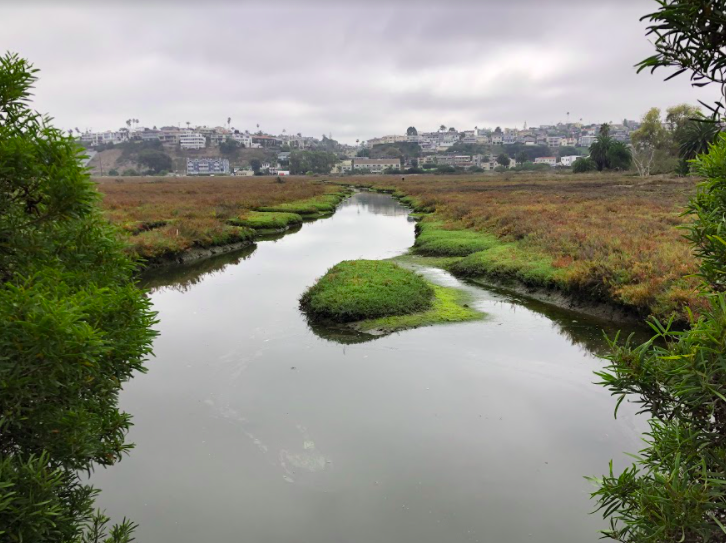
Our third wildlife protection initiative was a lawsuit seeking to compel the Fish and Game Commission to make a required compatibility determination with regard to a large, paved parking lot in Area A of the ecological reserve (north of Ballona Creek) that is mostly vacant and which is leased to the County of Los Angeles for uses unrelated to the ecological reserve. Below is a picture of native Cressa Truxillensis (Alkaliweed) pushing up between the cracks in the unused pavement. If we can convince (or compel) the Department of Fish and Wildlife to take this unnecessary pavement, we expand the amount of native habitat at the ecological reserve, which is precisely the purpose of an ecological reserve according to the California Fish and Game Code.

Nature Education
We are thrilled to be scheduling our first in person field trip to the Ballona Wetlands in almost two years! In the meantime, Lisa and Sofia conducted dozens of remote nature classes for students who are very eager to learn about watersheds and aquatic systems. These classes are free to the schools, which are primarily Title I schools. Although the pandemic has prevented us from conducting any in person field trips since March of 2020, we are cautiously optimistic that we will be able to resume field trips in early 2022! This, of course, depends on how quickly we are able to tackle the omicron variant. It also depends on how much money we can raise for buses and educational materials, like our popular bird and fish booklets.
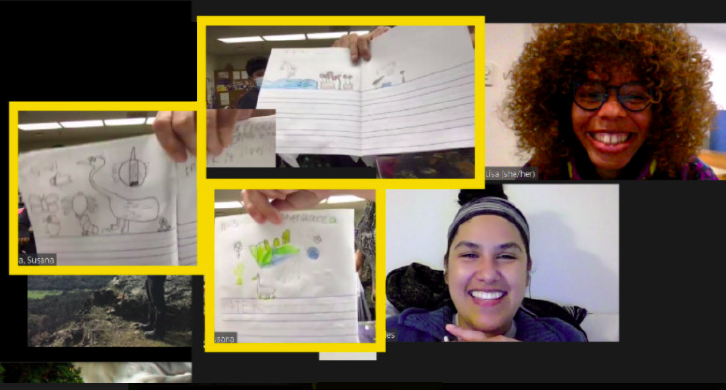
We are also very excited to have Gabrielle Crowe join our Board of Directors and also take on a consulting role in which she will help guide our nature education curriculum and activities. Gabrielle’s fifteen years of experience as a nature educator and her ancestral connection to the land that now makes up the ecological reserve will be invaluable to our efforts.
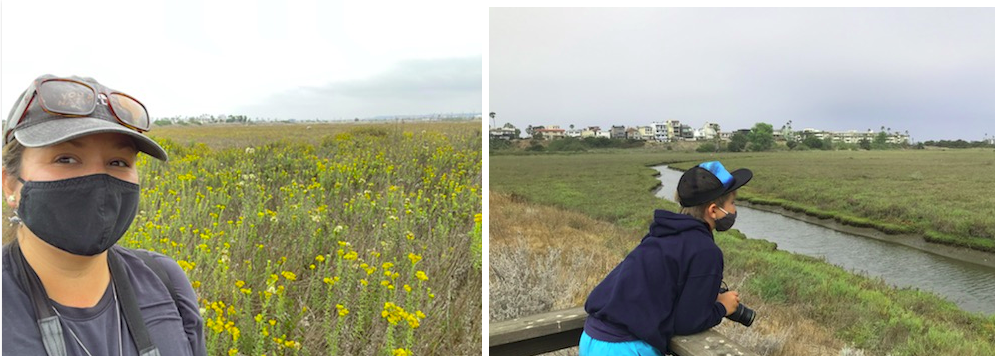
Gabrielle Crowe and her oldest of three children enjoying a visit to the Ballona Wetlands.
Public Access
We continue to advocate for public access that prioritizes wildlife and sensitive habitat. Human use of the ecological reserve must come second to its primary purpose of providing a sanctuary to flora and fauna that remain threatened from urban encroachment. However, current access restrictions are based purely on politics, rather than sound ecological considerations. The lack of access to Areas A and C (north of Ballona Creek and west and east of Lincoln Blvd respectively) has resulted in those areas being largely neglected. The locked gates, which were installed to welcome visitors to the reserve and which cost taxpayers tens of thousands of dollars, only prevent nature enthusiasts from conducting educational and stewardship programs, such as field trips, trash removal, or planting of native vegetation in these areas. Those wishing to trespass for illicit activity easily cut holes in the fence. Ironically, a local little league is permitted to play baseball games in the ecological reserve, while students hoping to experience nature within these areas of the reserve areas are shut out. This is an inequity that we are working to correct.
The current policies are a reversal from previous policy that acknowledged the importance of maintaining responsible access. This 2005 report commissioned by the State Coastal Conservancy acknowledged the importance of maintaining access and encouraging groups like ours to continue our work, which is highlighted in the report. Below are two photos from the 2005 report of the Land Trust’s stewardship and education work that the report urged to be continued. We stand ready and eager to resume that work once we are able to regain access. to the reserve.
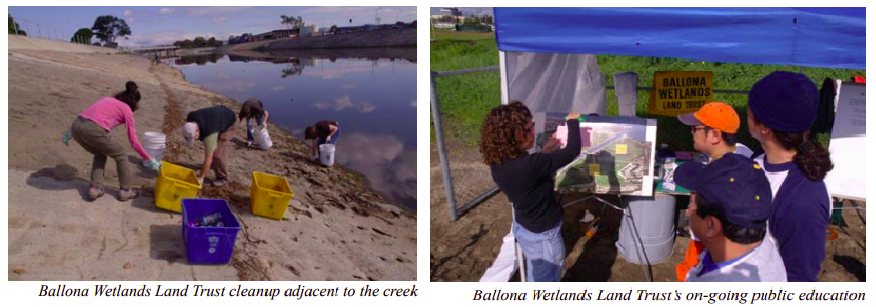
Transparency
Without access to information, our ability to advocate for wildlife friendly policies is greatly hindered. The frequency with which public agencies and other entities with responsibility for the Ballona Wetlands have attempted to circumvent transparency laws is disappointing and appalling, and have litigated over a dozen such violations in the past 10 years, with all but two cases ending with either a favorable ruling or settlement. This year, we sued the Bay Foundation for breach of a previous settlement agreement which led to a new settlement agreement in which the Bay Foundation agreed to open all of the meetings of their Board of Directors open to the public. This is important, because the Bay Foundation does the work of the Santa Monica Bay National Estuary Program, which is a federally funded program that is supposed to be under the direction of the Santa Monica Bay Restoration Commission, a state agency. The Bay Foundation has been involved with both of the special interest construction projects that we were able to stop and also played a central role in developing the flawed engineering plans described above.
We also received a favorable court ruling on December 13 with regard to a Brown Act case against the Marina del Rey Convention and Visitors Bureau (CVB) that will require the CVB to open its meetings to the public. This is important because the CVB continues to lobby against the removal of paved. mostly unused parking lots within the Ballona Wetlands Ecological Reserve. Ensuring the public has a voice at the CVB meetings could lead to a change in the CVB’s position. See the Court’s ruling here.
Unfortunately, we did also receive an unfavorable ruling in a substantial public records act case against the Santa Monica Bay Restoration Commission, a state agency that is essentially run by a private non-profit called the Santa Monica Bay Restoration Foundation. Despite clear documentation showing that Foundation employees create and receive records performing work on behalf of the Commission, the Commission and Foundation denied this relationship in order to circumvent the California Public Records Act. We have appealed the case and are awaiting an outcome.
Please Support or Work!
Again, we ask you to consider supporting our conservation efforts with a donation via PayPal, by going to ballona.org/donate and clicking on the yellow Donate button, or by mailing a check to P.O. Box 5623 Playa Del Rey, CA 90296.
We also encourage you to join our email list by clicking here.
Thank you!